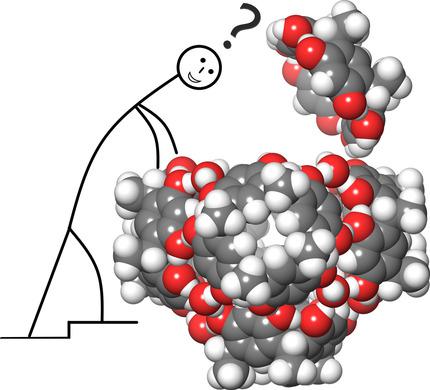当前位置:
X-MOL 学术
›
ChemCatChem
›
论文详情
Our official English website, www.x-mol.net, welcomes your
feedback! (Note: you will need to create a separate account there.)
Supramolecular Catalysis with Self‐Assembled Capsules and Cages: What Happens in Confined Spaces
ChemCatChem ( IF 3.8 ) Pub Date : 2020-11-19 , DOI: 10.1002/cctc.202001570 Carmine Gaeta 1 , Pellegrino La Manna 1 , Margherita De Rosa 1 , Annunziata Soriente 1 , Carmen Talotta 1 , Placido Neri 1
ChemCatChem ( IF 3.8 ) Pub Date : 2020-11-19 , DOI: 10.1002/cctc.202001570 Carmine Gaeta 1 , Pellegrino La Manna 1 , Margherita De Rosa 1 , Annunziata Soriente 1 , Carmen Talotta 1 , Placido Neri 1
Affiliation

|
The confined space inside self‐assembled capsules or cages provides a unique environment in which organic reactions can be efficiently catalyzed, thanks to the confinement effect of the substrates. In confined spaces the chemical reactions can show unusual mechanisms due to the conformational control of the substrates, steric constrictions, stabilization of species by secondary interactions, and solvent exclusion. Consequently, the classical rules of the organic reactivity are often broken. Thus, many examples reported to data in the literature confirm the paradigm stated by D. J. Cram in 1989: “These carceplexes represent a new state of matter whose interiors are new phase…”. The confined space inside the self‐assembled capsules or cages represents a new phase for the chemical reactivity where there is still so much to explore. In this review we highlight the best‐known cases of reactivity in confined spaces, focusing our attention on the driving forces that drive the encapsulated reactions toward uncommon outcomes. Literature examples that constitute the landmarks in the topic of supramolecular catalysis in confined spaces are also reviewed.
中文翻译:

自组装胶囊和笼子的超分子催化:在密闭空间中发生的事情
自组装胶囊或笼子内的密闭空间提供了独特的环境,由于底物的密闭作用,可以有效地催化有机反应。在受限的空间中,由于底物的构象控制,空间收缩,通过二次相互作用稳定物质以及排除溶剂,化学反应可能会显示出异常的机理。因此,有机反应的经典规则经常被打破。因此,许多文献报道的例子证实了DJ Cram在1989年提出的范式:“这些脑复合物代表了一种新的物质状态,其内部是新阶段……”。自组装胶囊或笼子内的密闭空间代表了化学反应的新阶段,在那里仍有许多探索的空间。在这篇综述中,我们重点介绍了密闭空间中最著名的反应性案例,我们将注意力集中在驱动封装反应朝着不寻常结果转移的驱动力上。还回顾了在受限空间中构成超分子催化主题的标志性文献的例子。
更新日期:2020-11-19
中文翻译:

自组装胶囊和笼子的超分子催化:在密闭空间中发生的事情
自组装胶囊或笼子内的密闭空间提供了独特的环境,由于底物的密闭作用,可以有效地催化有机反应。在受限的空间中,由于底物的构象控制,空间收缩,通过二次相互作用稳定物质以及排除溶剂,化学反应可能会显示出异常的机理。因此,有机反应的经典规则经常被打破。因此,许多文献报道的例子证实了DJ Cram在1989年提出的范式:“这些脑复合物代表了一种新的物质状态,其内部是新阶段……”。自组装胶囊或笼子内的密闭空间代表了化学反应的新阶段,在那里仍有许多探索的空间。在这篇综述中,我们重点介绍了密闭空间中最著名的反应性案例,我们将注意力集中在驱动封装反应朝着不寻常结果转移的驱动力上。还回顾了在受限空间中构成超分子催化主题的标志性文献的例子。









































 京公网安备 11010802027423号
京公网安备 11010802027423号